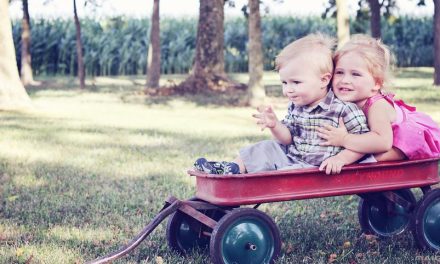New parents have a lot to think about, starting with how to take care of their little one! It’s not uncommon for seemingly trivial things (such as how best to fold your baby’s onesies, pajamas, and pants) go halfway. But keeping your baby’s drawers neat and organized can actually do wonders to your mind – especially in the early years of your baby’s life.
Here, learn about some of the different folding methods and the best ways to fold and store baby clothes after washing. Plus, how it can help make parenthood easier.

Benefits of Well-Folded Baby Clothes
A neat baby dresser is good for relieving stress.
June Doran, a parenting and finishing expert at This Simple Balance, said:”Keeping baby clothes neat and tidy is especially helpful in two situations: when space is limited, and when changing diapers in the dark in the middle of the night. “. “When you’re standing there, sleepy-eyed and exhausted, with all the source of the explosion on your hands, knowing exactly where you’ve put your zippered pajamas neatly in a drawer might save you from a complete breakdown.”
Taking the time to fold your baby’s clothes can also help with one of the biggest challenges new parents face: exhaustion.
“When I’m tired, I have a hard time thinking, let alone looking for things,” said Caroline Dilbeck, a former pediatric nurse and founder of the organization Nashville. “Keeping your baby’s clothes neat and organized can save a lot of time and effort!As a mum of two children under the age of two, I can attest to this crucial. Also, I wish I could spend time snuggling with babies instead of looking for onesies.”
How to Fold Baby Clothes?
There are two common ways to fold baby clothes – the traditional method and the KonMari method (aka file folding). The traditional method is to stack folded clothes inside a drawer, while the KonMari method (popularized by Marie Kondo, author of The Magic of Tidying Up That Changed Lives) prioritizes being able to see all the clothes in the drawer at the same time.
Which is best? According to Dolan, a mother of five, there is no competition. “When I had three kids under the age of 5, every time I put away piles of traditional folded clothes, the drawers would get cluttered in less than a day. It took a long time to find the clothes I wanted for each child, and it took a long time to put away the newly folded clothes because I had to rearrange the drawers first,” she shared.
She says discovering the KonMari folding method has changed her life. “I can easily find anything I want and find matching outfits for my kids in seconds. And the best part is that the drawers stay organized,” Dolan said.
In addition to helping you stay organized, the KonMari folding method is also very space-saving. “I can comfortably fit all my fifth child’s clothes in a dresser drawer.”
Doran uses the KonMari folding method for all baby clothes, with the exception of jackets and dresses, which she prefers to hang on hangers or hooks. Dilbeck agrees, although she also uses the pleated method of pants (more on this method below).

How to Fold a Baby One-Piece with the Konmari Method?
This method works well for short-sleeved and long-sleeved onesies. When you’re done, you should be able to neutralize the onesies in the drawer so that all of your onesies will be “archived” in a way that you can see each one.
- Place the jumpsuit on a flat surface to smooth out any creases.
- Fold the jumpsuit vertically in half, sleeve to sleeve.
- Fold your arms so that they are above your body.
- Fold the jumpsuit horizontally in half and button it down to the collar.
- Fold the jumpsuit horizontally in half again (so it’s a quarter).
It may take a few attempts to get the hang of the method, but once you do, everything will be smooth sailing from now on. Once you’ve folded all your onesies, place them neatly in a drawer.
How to Fold a Crib with the Konmari Method?
If your pajamas are too thick (such as wool pajamas in winter) to fold into quarters, you can use a third or simply roll them up.
- Place the sleepers face down on a flat surface to smooth out the creases.
- Fold vertically in half, leg to leg, sleeve to sleeve.
- Fold your arms so that they lie flat above your body.
- Fold horizontally in half, feet to collar.
- Fold it horizontally again (if you can).
How to Fold Baby Pants?
Baby pants and shorts can also be folded using the KonMari method. But if your baby’s pants are tucked into a drawer so that every time you pull out a pair of pants, some of them unfold, Deerbeck recommends the hemming method (which can also be used for baby shirts). You can still file pants folded with the hemming method into a drawer, just like pants folded with the KonMari method.
KonMari method
- Place the pants on a flat surface to smooth out the creases.
- Fold them vertically in half, leg to leg.
- Fold horizontally in half, from the ankle to the waist.
- Fold horizontally in half again (so the pants are a quarter).
Tuck method
- Place the pants on a flat surface to smooth out the creases.
- Fold vertically in half, leg to leg.
- Fold your ankles up as if buttoning up the cuffs of your pants.
- Starting at one end of the waist, fold the pants down and then down again, aligning with the other end.
- Tuck the folded edge into the top ankle opening and flatten.
But the truth is, when you have a newborn baby to learn how to feed, soothe, bathe, and nurture your baby, folding their tiny onesie may be the last thing you want to do. But learning how to organize your little clothes into a neat drawer in your baby’s room might save you from the midnight worries. If you have a partner, encourage them to learn these methods as well so they can help wash all the baby’s clothes.
At the end of the day, a happy, healthy, and well-fed baby is the most important thing right now. If those perfectly laid out drawers now have to take a back seat, that’s okay too. Enjoy the feeling of your baby snuggling up and do laundry and more.








